 "ttyymmnn" (ttyymmnn)
"ttyymmnn" (ttyymmnn)
01/16/2018 at 12:35 • Filed to: wingspan, Planelopnik, TDIAH
 11
11
 18
18
 "ttyymmnn" (ttyymmnn)
"ttyymmnn" (ttyymmnn)
01/16/2018 at 12:35 • Filed to: wingspan, Planelopnik, TDIAH |  11 11
|  18 18 |
!!! UNKNOWN CONTENT TYPE !!!
Welcome to
This Date in Aviation History
, getting of you caught up on milestones, important historical events and people in aviation from January 13 through January 16.
!!! UNKNOWN CONTENT TYPE !!!
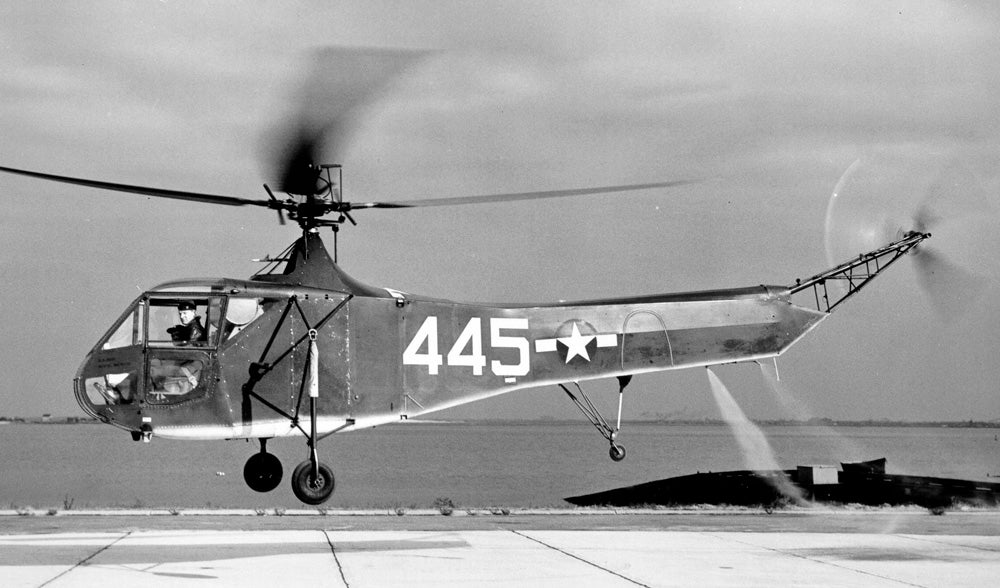
January 13, 1942 – The first flight of the Sikorsky R-4. We tend to think of the helicopter as a relatively recent invention, but as early as 1493, Leonardo da Vinci envisioned a vehicle that could take off and land vertically. He called it an “ !!!error: Indecipherable SUB-paragraph formatting!!! ,” and it worked on the same principal as a screw moving through water. It is unlikely that his invention would ever have worked, and he never made a model of it. But man’s fascination with vertical flight continued into the 20th century, with many attempts to create a vertical flying machine. The German aircraft builder Focke-Wulf created the first fully functioning helicopter with their !!!error: Indecipherable SUB-paragraph formatting!!! , a dual rotor system that was capable of vertical, controlled flight. But it was !!!error: Indecipherable SUB-paragraph formatting!!! who would perfect the helicopter we recognize today.

The Sikorsky VS-300, with Igor Sikorsky at the controls in his trademark fedora. The VS-300 formed the basis for the V-316 and R-4.
Sikorsky emigrated from Russia to the United States in 1919 after becoming a successful designer of large airplanes and flying boats. By 1938, he began working on the problem of vertical flight, and his efforts resulted in the breakthrough of the !!!error: Indecipherable SUB-paragraph formatting!!! , the first successful helicopter in the US to use a single lifting rotor, the first to use a single tail rotor to counter torque from the main rotor, and the first to power both rotors with a single engine. It took two years for Sikorsky to perfect the VS-300, but the true breakthrough came with his development of cyclic control, which altered the angle of the rotor disc to allow the helicopter to move in all directions of flight. Having perfected this system of control, which is still used today, Sikorsky moved on to refining it into a machine that he could sell to the US Army or, for that matter, anybody else who would buy it.
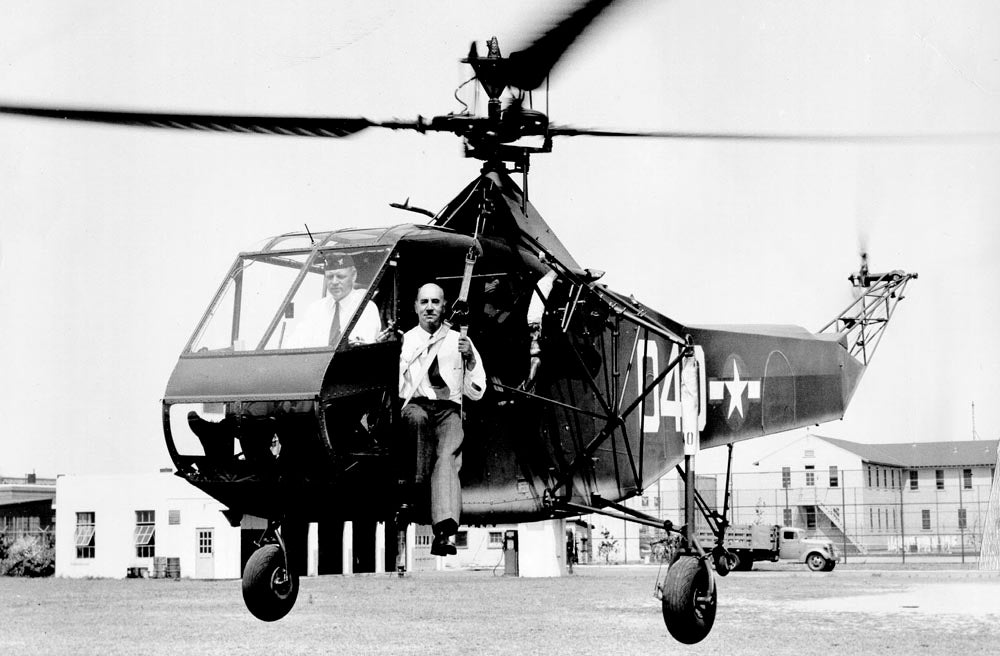
The R-4 is evaluated by the US Coast Guard, with Igor Sikorsky seated in the hoist sling.
Sikorsky called his new machine the VS-316 and, like the VS-300, it was constructed from a frame of steel tubes, but the two-seat cockpit was completely enclosed with fabric, as was much of the fuselage. The first flight was made using a 165 hp Warner radial aircraft engine, but later models received a more powerful seven-cylinder !!!error: Indecipherable SUB-paragraph formatting!!! radial engine that produced 200hp and could propel the helicopter to about 75 mph with a ceiling of 8,000 feet. The Army tested the first helicopter as the XR-4 and, after testing, they accepted the new aircraft in 1942. As part of the test regime, the XR-4 set records for endurance, altitude and airspeed with a cross-country flight from Connecticut to Ohio, covering 761 miles and flying as high as 12,000 feet at up to 90 mph.
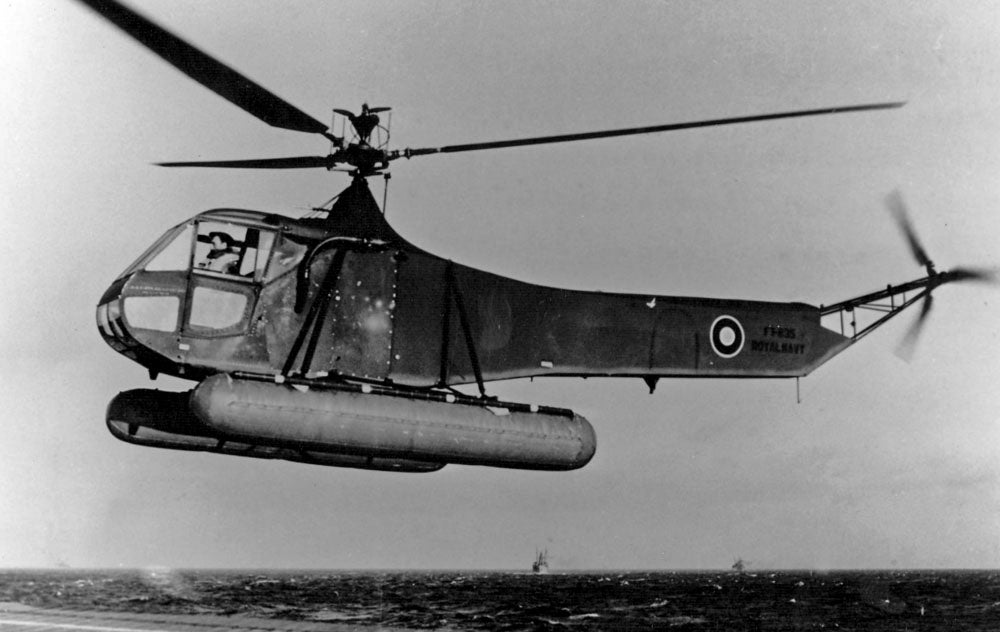
An R-4, fitted with pontoons, in British Royal Navy service
Following its acceptance by the Army, the R-4 became the first mass produced helicopter in the world. Sikorsky built 131 R-4s for the US Army, US Coast Guard, and the Royal Air Force, where it was known as the Hoverfly I. And, in a demonstration of how invaluable the helicopter would become in the future, US Army Lt. Carter Harman conducted the first combat rescue by helicopter in 1944, flying his R-4B to recover four members of an air crew that had crashed on a mountaintop in the China-Burma-India theater.
(US Coast Guard photo; photo via
!!!error: Indecipherable SUB-paragraph formatting!!!
; US Coast Guard photo; US Navy photo)
!!! UNKNOWN CONTENT TYPE !!!
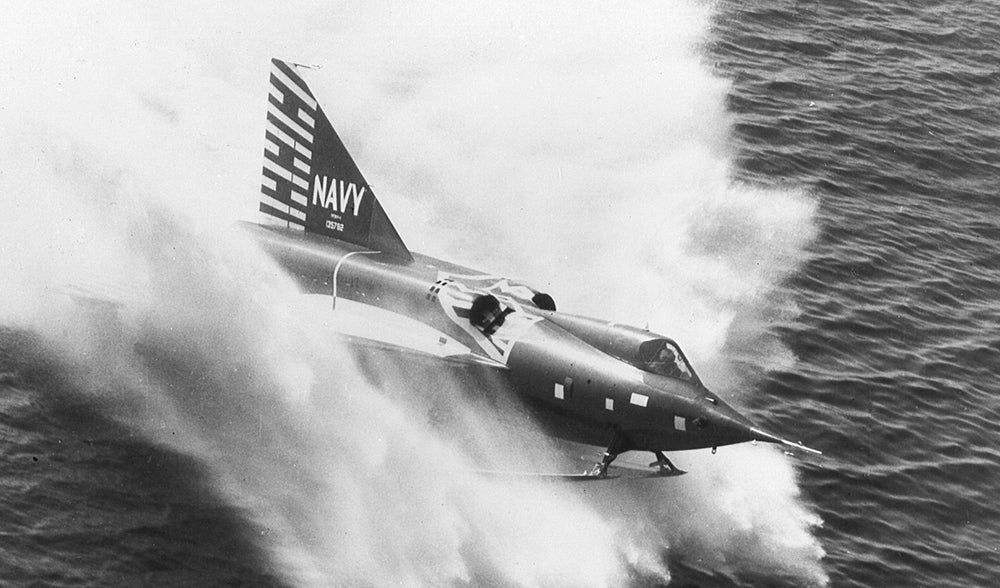
January 14, 1953 – The first flight of the Convair F2Y (YF-7) Sea Dart. With 71-percent of the Earth covered in water, it only makes sense that aircraft designers would work to develop aircraft that could take off or land on the surface of the water. Runway space would be virtually unlimited, and transoceanic flights had the added measure of safety of being able to land just about anywhere in case of emergency. Flying boat airliners had been plying the skies since the 1930s, and seaborne fighters were developed during WWII, particularly by the Japanese for use at their far-flung island bases. In England, Saunders-Roe, a company famous for flying boats, produced the !!!error: Indecipherable SUB-paragraph formatting!!! , a jet powered seaplane fighter in 1947. Not to be outdone, the US Navy issued a request for proposals in 1948 to develop a their own seaplane jet fighter.
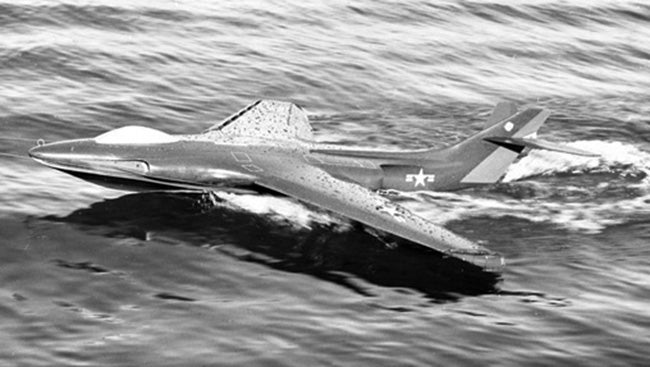
Radio-controlled model of the Convair Skate fighter
Convair had already been working on an internal project to create a jet would use the shape of the wing and fuselage as its own flotations system. Called the Skate, the aircraft had progressed to the point of the construction of a flying scaled model, though it bore little resemblance to the future Sea Dart. Nevertheless, Convair gained valuable experience in the seaplane fighter concept, knowledge they put to use later with the Sea Dart. At the same time, NACA was also working on the concept of a seaborne fighter, and their work pointed toward retractable skis as being the best means of operating form the surface of the water. Not only would they be able to absorb the buffeting of takeoff and landing, the skis could be retracted in flight to reduce drag.
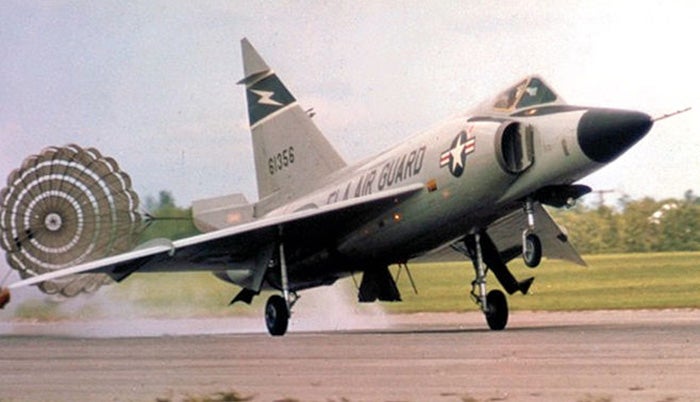
Convair F-102 Delta Dagger, which formed the basis for the Sea Dart
At the time of the Navy’s request, Convair was working on their delta-winged !!!error: Indecipherable SUB-paragraph formatting!!! , and it was this aircraft that formed the basis for the Sea Dart. In addition to mounting skis, other modifications were required, such as a reshaping of the fuselage to make it buoyant, and the movement of the air intakes aft and upward to avoid water ingestion. The Sea Dart also had two engines versus the Delta Dagger’s one.

Testing began with a series of taxi tests, and it was during one of these tests that the Sea Dart left the surface of the water, making an unintentional first flight of about 1,000 feet. The official first flight was undertaken on April 9, 1953. This flight had been delayed because Convair was struggling with severe ski pounding as the Sea Dart accelerated on the water. Eventually, engineers tried over 100 different ski shape and shock absorber configurations as they tried to overcome the problem, eventually settling on a single wide ski rather than two. But even when the Sea Dart got into the air, it could only manage a speed of Mach .99, and could only break the sound barrier in a shallow dive.
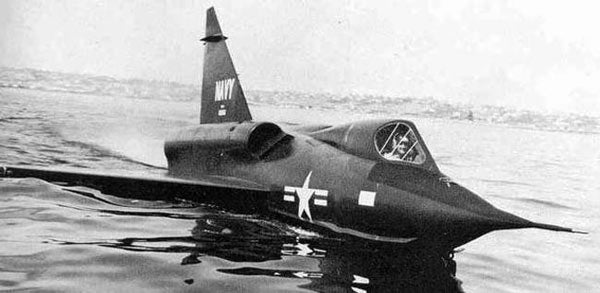
Convair considered a complete redesign of the fighter, with a switch to a single, more powerful engine, but a crash during a demonstration flight sealed the fate of the Sea Dart. The program was canceled, and the remaining four aircraft eventually found their way to museums around the country. Interestingly, even though the Sea Dart never entered production, the Navy still redesignated the aircraft as the YF-7 six years after its cancellation as part of the !!!error: Indecipherable SUB-paragraph formatting!!! adopted in 1962. (US Navy photo; photo author unknown; US Navy photo; photo author unknown)
!!! UNKNOWN CONTENT TYPE !!!
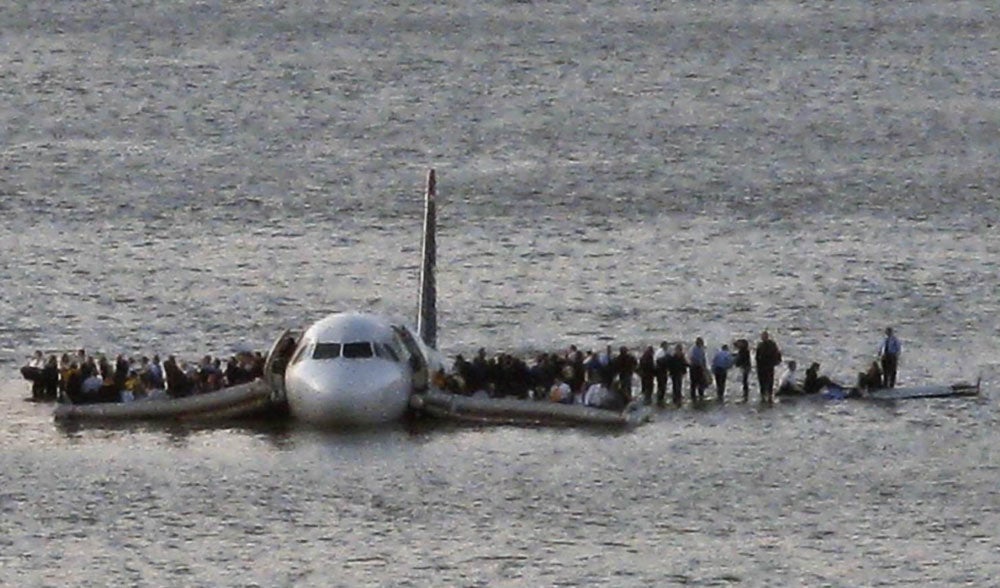
January 15, 2009 – The ditching of US Airways Flight 1549. When airplanes take to the skies, they must not only watch out for other aircraft. Planes have to share the skies with the birds who were there first, and bird strikes are a constant danger to pilots and aircraft—and birds, it must be said. Bird strikes can cause significant, often expensive damage, though it is rare that a bird strike will bring down an modern airliner, in large part because modern jet engines are designed and tested to withstand ingesting birds. But rare doesn’t mean never, as the passengers and crew of US Airways Flight 1549 found out.
Flight 1549 was a regularly scheduled flight from New York’s LaGuardia Airport to Charlotte, North Carolina. At the controls of the !!!error: Indecipherable SUB-paragraph formatting!!! (N106US) that day were Captain Chesley “Sully” Sullenberger and First Officer Jeffrey Skiles along with three flight attendants and 150 passengers. Roughly three minutes after takeoff, while climbing out from LaGuardia, the Airbus flew through a flock of large !!!error: Indecipherable SUB-paragraph formatting!!! and both engines quickly lost power as the airliner passed near the George Washington Bridge over the Hudson River. FO Skiles was flying the plane at the time and, after striking the birds at approximately 2,800 feet, Captain Sullenberger took over the controls while FO Skiles started the emergency checklist for restarting the engines. Their immediate need was to find a place to land safely as altitude and airspeed were quickly dropping away.
Once alerted to the emergency, ground controllers held all traffic and suggested that the crew return to LaGuardia. Sullenberger quickly assessed their predicament and realized that they would never make it back, so he suggested Teterboro Airport in New Jersey. But Teterboro was too far away. Seeing a water ditching as their only hope, Captain Sullenberger calmly told controllers, “We can’t do it. We’re going to be in the Hudson.” As the stricken airliner passed less then 900 feet above the George Washington Bridge, Sullenberger told the passengers to brace for impact and gently set the A320 down on the surface of the Hudson River off Midtown Manhattan. From bird strike to landing, only three minutes had elapsed.
Despite large holes being ripped in the fuselage on impact, the Airbus remained afloat, drifting slowly downstream with the current. Passengers escaped through the overwing emergency exits and waited calmly on the wings for rescue. At the front of the aircraft, other passengers filled exit slides that acted as life rafts when inflated. Ferry boats and other craft responded immediately to the ditching, and the first rescue boats arrived four minutes after the plane touched down. Ultimately, all 155 passengers and crew were rescued. Only five were treated for significant injuries, while a few others were treated for hypothermia.

The Airbus A320 is hoisted from the frozen waters of the Hudson River two days after the accident
The NTSB investigation determined the probable cause of the accident to be “the ingestion of large birds into each engine, which resulted in an almost total loss of thrust in both engines.” But they also cited a number of factors that led to the best possible outcome for the plane. Good visibility helped the pilots, and the proximity of rescue vessels aided in the swift rescue of passengers. The Airbus had more safety gear on board than regulations require. And the entire crew exercised excellent !!!error: Indecipherable SUB-paragraph formatting!!! . For their actions, the entire crew received the Master’s Medal of the !!!error: Indecipherable SUB-paragraph formatting!!! , and NTSB member Kitty Higgins described the landing as “the most successful ditching in aviation history.” The A320 was recovered from the water and now resides in the Carolinas Aviation Museum, minus its wings. (Photo by Steven Day/AP via !!!error: Indecipherable SUB-paragraph formatting!!! ; photo by Spyropk via !!!error: Indecipherable SUB-paragraph formatting!!! )
!!! UNKNOWN CONTENT TYPE !!!
Short Takeoff
!!! UNKNOWN CONTENT TYPE !!!
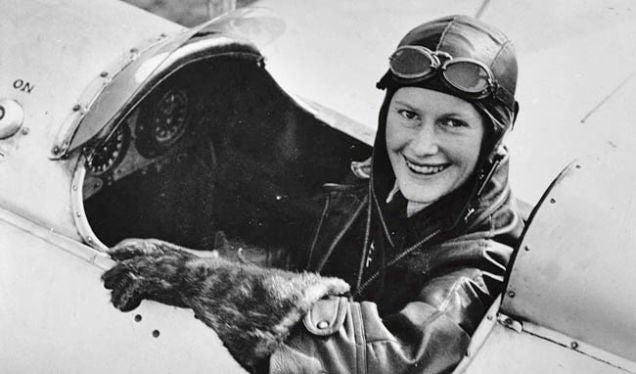
January 13, 2009 – The death of Nancy Bird Walton, a pioneering Australian aviatrix and the founder and patron of the !!!error: Indecipherable SUB-paragraph formatting!!! . Walton was born in 1915, and at the age of 19 she became the youngest Australian woman to earn a pilot’s license. After purchasing her first aircraft, a !!!error: Indecipherable SUB-paragraph formatting!!! , Walton, along with friend Peggy McKillop, began a barnstorming tour of Australia and later formed the !!!error: Indecipherable SUB-paragraph formatting!!! , an aerial medical service that covered territory not reached by other flying medical services. The first Qantas !!!error: Indecipherable SUB-paragraph formatting!!! was named in her honor. (Photo from the State Library of New South Wales via !!!error: Indecipherable SUB-paragraph formatting!!! )
!!! UNKNOWN CONTENT TYPE !!!
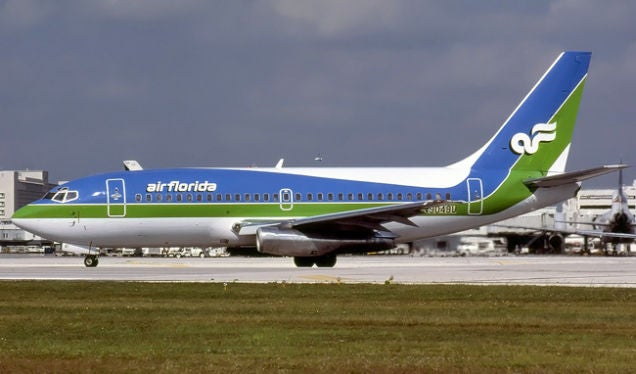
January 13, 1982 – The crash of Air Florida Flight 90, a !!!error: Indecipherable SUB-paragraph formatting!!! (N62AF) flying from Washington’s National Airport to Miami. Prior to takeoff in snow and icing conditions, the pilots failed to utilize the internal ice protection systems on the engines, and used reverse thrust while leaving the gate, an action which may have clogged the engines with ice. After waiting to take off, and building up more snow on the wings, the pilots opted not to return to the de-icing station despite indications that the engines were not performing properly and despite the snow and ice that had built up on the wings. Shortly after takeoff, the 737 crashed into the 14th Street bridges over the Potomac River, killing 74 passengers and crew, as well as four motorists on the bridge. Five passengers survived. The NTSB cited the crew’s inexperience with icing conditions, and the build up of ice and snow on the wings’ leading edges, as the cause of the crash. (Photo by Peter Duijnmayer via !!!error: Indecipherable SUB-paragraph formatting!!! )
!!! UNKNOWN CONTENT TYPE !!!
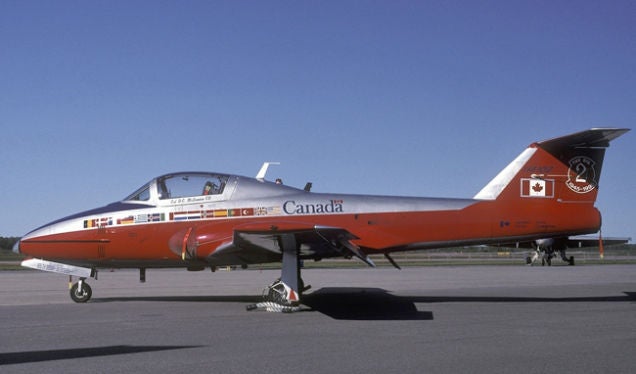
January 13, 1960 – The first flight of the Canadair CT-114 Tutor, the standard Canadian jet trainer from the early 1960s until its retirement in 2000. Strongly resembling the !!!error: Indecipherable SUB-paragraph formatting!!! , the Tutor is powered by a pair of Orenda J85 turbojet engines, the Canadian-built version of the !!!error: Indecipherable SUB-paragraph formatting!!! . Its straight wings provide excellent low-speed handling, and the design of its vertical stabilizer is intended to help students learn how to recover from a spin. An armed attack version was also developed for the Malaysian air force. Though the Tutor was retired from training duties in 2000 and replaced by the !!!error: Indecipherable SUB-paragraph formatting!!! and !!!error: Indecipherable SUB-paragraph formatting!!! , it remains in service with the Canadian Forces !!!error: Indecipherable SUB-paragraph formatting!!! flight demonstration team. (Photo by Alain Rioux via !!!error: Indecipherable SUB-paragraph formatting!!! )
!!! UNKNOWN CONTENT TYPE !!!

January 13, 1940 – The first flight of the Yakovlev Yak-1,
a single-seat fighter that served Russia in large numbers during WWII. Despite early teething problems with the design, particularly with oil overheating issues, the Yak-1 was nevertheless an agile and heavily armed fighter that outperformed most of the enemy aircraft it faced, particularly at lower altitudes where it served as an escort for
!!!error: Indecipherable SUB-paragraph formatting!!!
attack aircraft. A total of 8,700 Yak-1s were built during the war and, when included with its variants, the
!!!error: Indecipherable SUB-paragraph formatting!!!
,
!!!error: Indecipherable SUB-paragraph formatting!!!
and
!!!error: Indecipherable SUB-paragraph formatting!!!
, more than 37,500 aircraft were built.
(Photo author unknown)
!!! UNKNOWN CONTENT TYPE !!!

January 14, 1986 – The death of Thierry Sabine, wrangler, motorcycle racer and founder of the !!!error: Indecipherable SUB-paragraph formatting!!! . Sabine was a passenger in a !!!error: Indecipherable SUB-paragraph formatting!!! helicopter when it crashed into a sand dune in Mali during a sudden sandstorm. Also killed were singer-songwriter !!!error: Indecipherable SUB-paragraph formatting!!! , pilot François-Xavier Bagnoud, journalist Nathalie Odent and RTL radio engineer Jean-Paul Lefur. Despite Sabine’s death, the Dakar Rally continues today, though it now is held in South America. (Photo by Yelles M.C.A. via !!!error: Indecipherable SUB-paragraph formatting!!! )
!!! UNKNOWN CONTENT TYPE !!!

January 14, 1960 – The first flight of the Piper PA-28 Cherokee. The Cherokee is a family of light aircraft that was designed for personal use, flight training and as an air taxi. The all-metal, unpressurized monoplane received its type certification in 1960, and was subsequently developed into the Arrow, Archer, and Dakota Warrior variants seating either two or four passengers and with either fixed or retractable landing gear. More than 37,500 aircraft of all variants have been built since production began in 1961, and production continues to this day. (Photo by Ad Meskens via !!!error: Indecipherable SUB-paragraph formatting!!! )
!!! UNKNOWN CONTENT TYPE !!!

January 14, 1950 – The first flight of the Mikoyan-Gurevich MiG-17.
The MiG-17, NATO reporting name Fresco, entered production in 1952 as an improvement over its predecessor, the
!!!error: Indecipherable SUB-paragraph formatting!!!
. Development began in 1949 as an effort to fix deficiencies in the earlier fighter discovered during fighting in Korea. The MiG-17 became one of the world’s most successful transonic fighters, and served into the 1960s. The Fresco also saw action in Vietnam, where its pilots claimed 28 kills against American aircraft. Like other Russian fighters of its era, it eschewed machine guns in favor of a mix of 37mm and 23mm cannons. More than 11,000 MiG-17s were built by Russia, Poland and China.
(Photo by the author)
!!! UNKNOWN CONTENT TYPE !!!
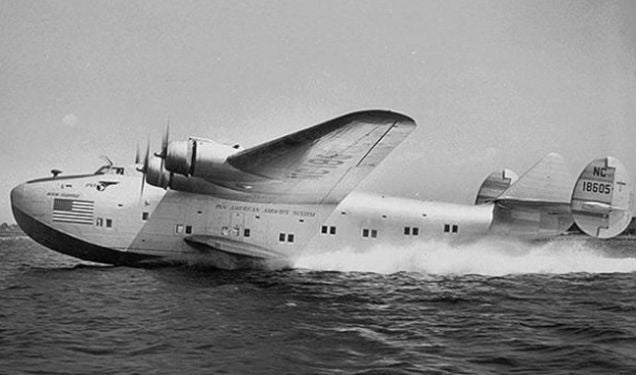
January 14, 1943 – Franklin D. Roosevelt becomes the first President of the United States to travel by airplane.
WWII was a truly global conflict, and in order for the leaders of the Allied powers to meet in a timely manner, it was necessary for the US President to fly to Casablanca in North Africa for a
!!!error: Indecipherable SUB-paragraph formatting!!!
with British Prime Minister Winston Churchill and Russian General Secretary Joseph Stalin. Roosevelt made this historic 15,000 mile round trip in a
!!!error: Indecipherable SUB-paragraph formatting!!!
flying boat named
Dixie Clipper
, becoming the first sitting president to fly in an airplane (Theodore Roosevelt flew before FDR, but he had left office before his flight). While in Africa, Roosevelt also traveled on a US Army
!!!error: Indecipherable SUB-paragraph formatting!!!
. It wouldn’t be until the presidency of Roosevelt’s successor, Harry Truman, that presidential air travel became commonplace.
(Photo via Pan Am)
!!! UNKNOWN CONTENT TYPE !!!
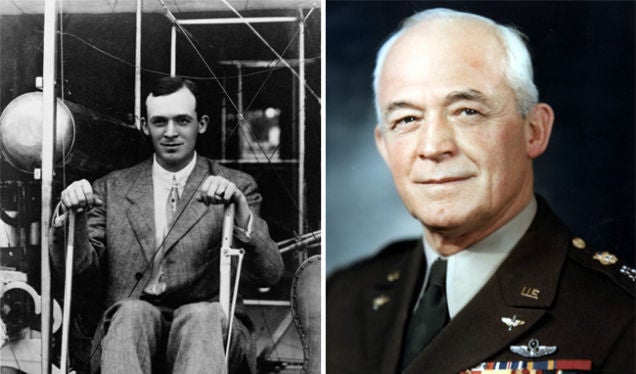
January 15, 1950 – The death of Henry Harley “Hap” Arnold.
Born in 1886 in Gladwyne, PA, Arnold was an American aviation pioneer who took flying lessons from the Wright Brothers, was one of the world’s first military pilots, and was one of the first three rated pilots in the history of the US Air Force. During WWI, Arnold oversaw the expansion of the
!!!error: Indecipherable SUB-paragraph formatting!!!
, and was a student of strategic bombing proponent
!!!error: Indecipherable SUB-paragraph formatting!!!
. During WWII, Arnold served as Commanding General of the US Army Air Forces, was the only Air Force general to hold a five-star rank, and the only general to hold a five-star rank in two different U.S. military services (US Army Air Forces and the US Air Force).
(US Air Force photos)
!!! UNKNOWN CONTENT TYPE !!!

January 15, 1943 – The first flight of the Vultee XP-54, nicknamed Swoose Goose, one of the radical designs that came out of the US Army’s R-40C request for aircraft that pushed the boundaries of aircraft design at the time. Originally designed as a heavily armed, high speed fighter, lackluster performance from the underpowered engine caused the concept to be changed to that of a heavily armed interceptor. The XP-54 featured a unique nose that could be raised or lowered depending on whether the machine guns or cannon, with its lower muzzle velocity, was being fired. Two prototypes were built before the project was canceled. (US Air Force photo)
!!! UNKNOWN CONTENT TYPE !!!
!!! UNKNOWN CONTENT TYPE !!!
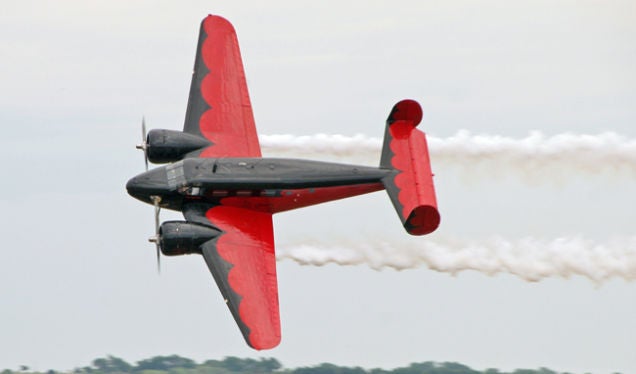
January 15, 1937 – The first flight of the Beechcraft Model 18,
a light, twin engined aircraft produced by Beech from 1937 to 1970, a production run that set a world record for its time. During WWII, more than 4,500 Beech 18s saw service with the US Army Air Forces where it was designated the C-45 Expeditor, AT-7 Navigator and AT-11 Kansan, and the US Navy, where it was known as the UC-45J Navigator and the SNB-1 Kansan. Over 90-percent of Army Air Forces bombardiers and navigators trained in the Beech 18. Following the war, the Beech 18 became a popular executive aircraft, served as a small airliner, and was used in all manner of testing and commercial flying. More than 9,000 were built during its 23-year production run, and many still fly today, with some even being used for aerobatics.
(Photo by the author)
!!! UNKNOWN CONTENT TYPE !!!
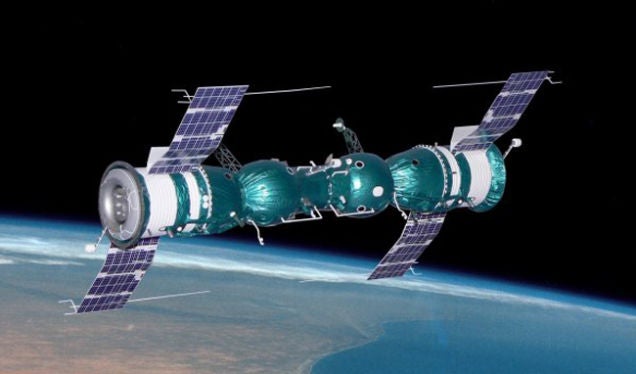
January 16, 1969 – The docking of Soyuz 4 and Soyuz 5, the first time that two spacecraft docked in space and transferred crew from one ship to the other. Soyuz 4, piloted by a single cosmonaut, blasted off from the !!!error: Indecipherable SUB-paragraph formatting!!! on January 14. Soyuz 5 blasted off one day later with a crew of three cosmonauts. All four cosmonauts were flying on their first mission into space. Soyuz 4 and 5 successfully docked on January 16, and on the 65th orbit of the Earth, two cosmonauts from Soyuz 5 performed a space walk to transfer to Soyuz 4, as a docking tube had not yet been developed. Soyuz 4 and 5 would return to Earth on January 17 and 18 respectively. The Americans would perform their own space docking two months later. (Model illustration by Lunokhod 2 via !!!error: Indecipherable SUB-paragraph formatting!!! )
!!! UNKNOWN CONTENT TYPE !!!
Connecting Flights
!!! UNKNOWN CONTENT TYPE !!!
!!! UNKNOWN CONTENT TYPE !!!
!!! UNKNOWN CONTENT TYPE !!!
!!! UNKNOWN CONTENT TYPE !!!
If you enjoy these Aviation History posts, please let me know in the comments. And if you missed any of the past articles, you can find them all at
!!!error: Indecipherable SUB-paragraph formatting!!!
. You can also find more stories about aviation, aviators and airplane oddities at
!!!error: Indecipherable SUB-paragraph formatting!!!
.
!!! UNKNOWN CONTENT TYPE !!!
 facw
> ttyymmnn
facw
> ttyymmnn
01/16/2018 at 12:44 |
|
Hey, I lived in the building in the foreground of the 1549 image (after the event though, and I was only on the 8th floor, much too low to have a view of the Hudson)!
 Wacko
> ttyymmnn
Wacko
> ttyymmnn
01/16/2018 at 12:51 |
|
I thought of you when i saw this post
https://oppositelock.kinja.com/jobbosite-lock-flight-global-is-hiring-a-military-avi-1822113636
 HammerheadFistpunch
> ttyymmnn
HammerheadFistpunch
> ttyymmnn
01/16/2018 at 12:56 |
|
There was also some news today about the airforce flying some b52's around the world.
The FP of all places. huh.
 ttyymmnn
> HammerheadFistpunch
ttyymmnn
> HammerheadFistpunch
01/16/2018 at 13:01 |
|
I think that story shows up in the next installment. I’d have to check, but I think I chose the date that the circumnavigation was completed rather than when it took off.
 ttyymmnn
> Wacko
ttyymmnn
> Wacko
01/16/2018 at 13:02 |
|
Were I twenty years younger and single, I’d look into it. Sounds like a cool gig.
 HammerheadFistpunch
> ttyymmnn
HammerheadFistpunch
> ttyymmnn
01/16/2018 at 13:03 |
|
Its not like this edition needed it, its jam packed!
 ttyymmnn
> HammerheadFistpunch
ttyymmnn
> HammerheadFistpunch
01/16/2018 at 13:03 |
|
There are even bigger posts coming......
 HammerheadFistpunch
> ttyymmnn
HammerheadFistpunch
> ttyymmnn
01/16/2018 at 13:09 |
|
I don’t know if you ever watch these but I got hooked on them a little while back
Air Florida Flight 90
 Smallbear wants a modern Syclone, local Maple Leafs spammer
> ttyymmnn
Smallbear wants a modern Syclone, local Maple Leafs spammer
> ttyymmnn
01/16/2018 at 13:13 |
|
Re Sikorsky, helicopters were actually his first interest. He tried several times to overcome the basic issues of vertical lift and eventually came to the conclusion that it was a waste of time with the technology available to him, and went on to make a name for himself in large conventional craft. During the depression his company was more or less shuttered by the holding company above him but he convinced them to let him keep going as a sort of experimental division iirc... with which of course he concentrated on helicopters.
Re the Hudson crash, the geese were a problem created by the city itself. Apparently some bright spark wanted to have geese at *insert name of park near airport here, can’t remember* all the time, so because geese are migratory and just don’t act like that they captured a number of geese and clipped their wings, permanently trapping the geese in the area. Naturally the following generations of geese didn’t migrate either since their parents hadn’t... however they of course were not flightless, and while they didn’t migrate they did fly around the area in large numbers. Perfect.
 McMike
> ttyymmnn
McMike
> ttyymmnn
01/16/2018 at 13:13 |
|
That US Airways Flight 1549 radio recording always gives me goosebumps. The controlled chaos and decision making in that cockpit with that crew just impresses the shit out of me.
So fucking calm.
 Highlander-Datsuns are Forever
> ttyymmnn
Highlander-Datsuns are Forever
> ttyymmnn
01/16/2018 at 13:13 |
|
These days they don’t mess around with icing conditions. I’ve been in planes that had no apparent icing whatsoever and we got de-iced. It takes a few minutes but I always want to be safe than sorry.
 ttyymmnn
> Highlander-Datsuns are Forever
ttyymmnn
> Highlander-Datsuns are Forever
01/16/2018 at 13:32 |
|
I think the culture of safety has improved significantly over the years, which is not to say that it terrible back in the 80s. There are always pressures on pilots from management to maintain the schedule. But I think CRM and other practices have helped pilots push back against management without the fear of losing their jobs.
 ttyymmnn
> McMike
ttyymmnn
> McMike
01/16/2018 at 13:34 |
|
https://www.poetryfoundation.org/poems/46473/if—-
 McMike
> ttyymmnn
McMike
> ttyymmnn
01/16/2018 at 13:38 |
|
Reminds me of an old customer of mine I used to have at the bakeries.
He came in every morning on his way to work. He was quiet, calm, and never really said much.
It was always very polite. Always had patience for new employees, or if a mistake was made on his order. He just ate it and never complained. It was almost like he was medicated.
He was one of the customers who always ordered the same thing, and we always had his order ready for him as he hit the counter. He was always there at the same time, paid with exact change, and left, taking his order to go.
One day, however, he came in 30-45 minutes late and it caught me off guard. He’s never late. Something else that caught me off guard was the fact that ate his breakfast in the dining room, and that his forehead, nose, tie, and shirt was covered with blood. He was a mess, but calmly went through the line as if nothing was wrong.
He just sat in the dining room, eating his breakfast like everyone else.
After he ate, he came back up to the counter and politely asked if he could use the telephone. He made his call, then went and sat back down.
Turns out he was t-boned as he was pulling in to the parking lot. He waited for the police to show up, and afterwards decided that he was going to just eat his breakfast before calling his wife to come pick him up.
Turns out that he had been an A-6 bombardier/navigator in Vietnam, and I guess as long as no one was shooting at him, or if he wasn’t flying in bad weather landing on a carrier at night, everything was just fine.
 ttyymmnn
> HammerheadFistpunch
ttyymmnn
> HammerheadFistpunch
01/16/2018 at 14:14 |
|
That crash had a profound impact on me. I remember the footage from the crash vividly, particularly the US Park Police officer leaping into the water to save a flight attendant who had been blinded by jet fuel and couldn’t hold on to the life ring. I get choked up watching it now.
 Cé hé sin
> ttyymmnn
Cé hé sin
> ttyymmnn
01/16/2018 at 15:50 |
|
Leonardo da Vinci envisioned a vehicle that could take off and land vertically
And he’s still at it! Well,
someone with his name
...is making
elicotteri
 ttyymmnn
> McMike
ttyymmnn
> McMike
01/16/2018 at 15:59 |
|
Turns out that he had been an A-6 bombardier/navigator in Vietnam, and I guess as long as no one was shooting at him, or if he wasn’t flying in bad weather landing on a carrier at night, everything was just fine.
Damn. If that doesn’t teach you priorities, nothing will.
 Distraxi's idea of perfection is a Jagroen
> ttyymmnn
Distraxi's idea of perfection is a Jagroen
> ttyymmnn
01/16/2018 at 16:24 |
|
Somewhere on YouTube there’s cockpit video of things going horribly wrong on an X-15 flight. Camera aimed at the dash, needles bouncing around, totally calm pilot’s voice describing what’s going on. The only thing that puts it in perspective is that every second or so you see a loose ballpoint pen fly across the frame, gradually getting smashed into smaller pieces as it bounces off the cockpit walls under oscillating G loads.